
In this morning event Christie's dress historian Jacqui Ansell helped us consider h our favourite objects of desire from an art historical point of view. It was a great chance to get more out of a visit to the V&A exhibit Shoes: Pleasure and Pain.
The V&A exhibition looked at the extremes of footwear from around the globe, presenting around 200 pairs of shoes ranging from a sandal decorated in pure gold leaf originating from ancient Egypt to the most elaborate designs by contemporary makers. Examples from famous shoe wearers and collectors will be shown alongside a dazzling range of historic shoes, many of which have not been displayed before.

While 'the selfie' is being billed as a massive contemporary phenomenon, photographers did not wait for the invention of digital smart phones or selfie sticks in order to turn the camera on themselves.
In this morning event, artist and National Gallery lecturer Aliki Braine explored the invention and rise of self-portraiture from humble beginnings as hidden painted faces to the obsessive documenting and displaying of our own digital images.
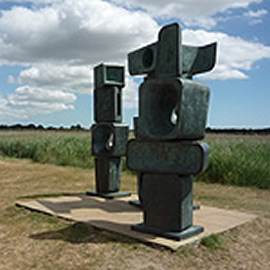
Art market, art crime, and sculpture historian Dr Tom Flynn will be discussing aspects of public sculpture and its susceptibility to theft and other forms of abuse.
In time for upcoming London sculpture shows — Barbara Hepworth and Alexander Calder at the Tate, and Henry Moore and Helaine Blumenfeld at Bowman Sculpture in Duke Street — he will explore how and why sculpture is enjoying an extraordinary revival of public interest.
"What fun to meet and chat with your Art Salon attendees. Lots of interesting exchanges and learning too. Had a fascinating and illuminating chat with Tom Flynn before the presentation, which was a bonus."

Rubens has been celebrated and castigated as the supreme painter of voluptuous female flesh, but the Royal Academy 'Rubens and His Legacy' show attempted to demonstrate how Rubens superbly confident mastery of paint made him the "painter's painter", a masterly technician who inspired painters from his own age until ours, including Watteau, Fragonard, Delacroix and Renoir.
A painter of portraits, religious works, narrative paintings and dynastic propoganda, Rubens was the most successful artist of his age. To give a clichéd response to his generously-apportioned ladies is to seriously under-estimate the power of his work. In this salon, Patrick Bade explained why.
'I just loved Patrick's stories and anecdotes. This was so much more insightful than what I typically learn at exhibitions.'
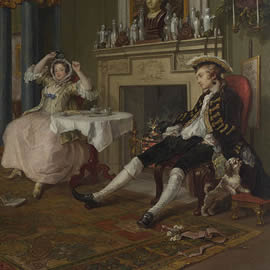
Julia Musgrave uses humour and story-telling to bring Hogarth's Marriage à la Mode and his other 'modern moral subjects' to life, explaining how the artist waged war against London's sex trade and child poverty as part of his personal crusade to establish modern urban life as an appropriate subject for high art
By taking a thoughtful look at life in London in the eighteenth century, we will see how these works came to be commissioned, how Hogarth's contemporaries would have understood them, and discover the many reasons why they remain popular today.
"A very dark period of London history was illuminated by Julia – a hugely informative tour of Hogarth's pictures and of London. She was able to bring out some unexpected humour in that savage world."
"'I loved the Salon....it was so interesting ....the talk was perfect.'
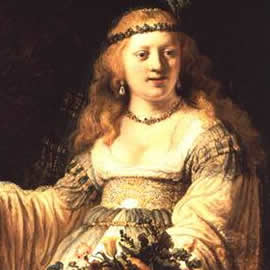
At this evening event, Christie’s art and costume historian Jacqui Ansell takes a new approach to understanding the genius of Rembrandt by exploring the culture and fashion of Rembrandt’s world. In the post-Reformation society in which he lived the avoidance of obvious extravagance meant displays of status had to be subtle, recondite knowledge was prized and many things were not what they first appeared to be…
"We loved the lecture!"
"Who would have thought Rembrandt's 'Flora' had such a dark secret?"
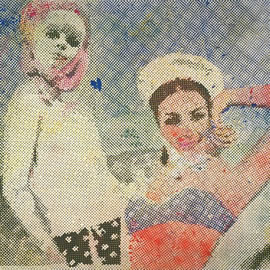
In this morning event, art historian and author Dr Marie-Anne Mancio discusses the German contemporary art auction-house ‘darlings’ – Gerhard Richter, Sigmar Polke, and Anselm Kiefer – as background to the forthcoming Royal Academy and Tate Modern shows this autumn.
These three artists came of age in postwar Germany and used their art to scrutinize the cultural upheavals of the Holocaust, Communism, and the later rise of consumerism and popular media.
"The November salon on German painters was fabulous!"
'Thank you for the talk recently on the 3 German post war artisits, Kiefer, Polke and Richter. I found it illuminating and am looking forward to next time.'

BBC art critic Estelle Lovatt talked us through some of the places where British contemporary artists get their ideas from. In this evening event, she explored the relevance and motivations behind today’s art in an illustrated talk that included a take on a certain unmade bed and a shelf of medications as exercises in self portraits.
"The whole occasion had a really nice feeling about it…you have created a series of fun and interesting sessions!"
"Last night's talk was very well organised and informative. The speaker was clearly a genius on the topic. What a delight to listen to her make order out of a world that to right brained people like me seems utterly chaotic and incomprehensible."

Artist and National Gallery lecturer Aliki Braine explored portrait photography: from the stilted poses of early daguerreotype portraits to today's obsessive capturing of 'selfies'.
In our morning session she took us through the 19th century craze of ‘cartes de visite’ and the more problematic portraits of criminals by Alphonse Bertillon. We looked at the 20th century celebrity and fashion portraits of Robert Mapplethorpe and David Bailey and finished off with the questions raised by the mock passport portraits of Thomas Ruff.
"The speaker was engaging, informative and she really made me look at the works in a new light. I adored it!"
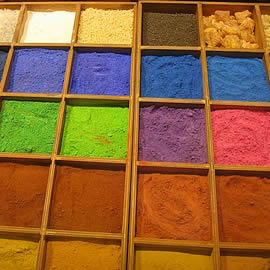
We sometimes feel ‘blue’, environmentalists are ‘green’ and ‘red hot’ is sexy as well as dangerous. Why do colours have such strong emotive power?
Spike Bucklow has researched the origins of paint pigments and believes their history goes a long way to explain their effect on us. Not only where they came from, but also the complex alchemical processes necessary to make them meant that an artist’s choice of colours in medieval and renaissance Europe was much more than just an aesthetic statement.
Up to the seventeenth century, the pigments themselves could add sophisticated layers of meaning to paintings; and up to and including the nineteenth century, artists’ pigments were valued for more than just their colour.
In this session, Spike helped us to discover how certain pigments became key players in the history of art – and how the colours we see now might not be what the artist intended.

In our first evening salon, passionate scholar Andrew Spira explored the life and works of Kazimir Malevich, the early 20th-century Russian painter who discovered abstraction in his search for spiritual freedom.
Malevich's paintings of geometric shapes emphasised surface and materiality rather than subject matter, creating a new visual language for the world. The session gave an excellent introduction to Tate Modern's 2014 Malevich retrospective.
"I wanted to say how much I loved the art salon! What a lovely, enjoyable, scintillating evening."

During the final chapter in the career of modernist painter Henri Matisse, the artist produced a blaze of works containing sculptural and luminous shapes of paper cut-outs.
Eveline Eaton discussed the creative virtuosity of Matisse during his last years as background to the 2014 Henri Matisse: the Cut-outs show at the Tate Modern.
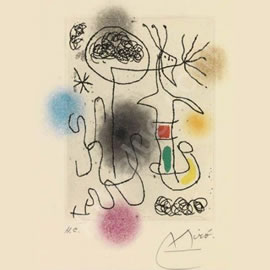
From the 5th century in Asia through till today, print has been a powerful medium for communicating the art and customs of a culture. Prints are well-recognized in the art world as the best entry point to art collecting; a print can have the same ability to dazzle and awe as a painting. However, the subtleties of this art form are sometimes tricky for a novice to spot.
With magnifying glasses, and samples of her own and others' work, Gilly Hatch revealed the differences among Lithographs, Woodcuts, Etchings, and Engravings in a lecture / hands-on session.
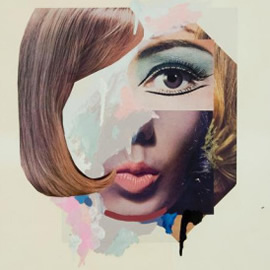
With clever and satirical allusions to film and television, interspersed with visual statements about consumerism and politics, popular culture infuses the work of Richard Hamilton, the father of pop art.
Ben Street examined the innovation and wit of British 20th-century artist Richard Hamilton prior to the 2014 Richard Hamilton retrospective at Tate Modern.
"...it was fascinating!!! I was completely engrossed!!! Ben was so engaging, very informative! "
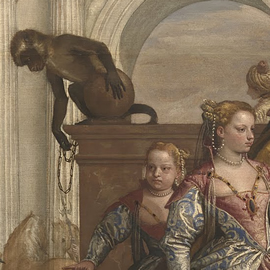
The vibrant colours and dynamic brush strokes of Renaissance Venetian art are appreciated today by throngs of crowds, whether at the Louvre, National Gallery, or the Met.
Dr Marie-Anne Mancio discussed the drama and genius of Venetian artist Paolo Veronese prior to the 2014 Veronese: Magnificence in Renaissance Venice exhibit at the National Gallery.
"The speaker was fantastic: engaging, funny, informative and able to convey such a vast amount of information without referring to any notes - impressive!"
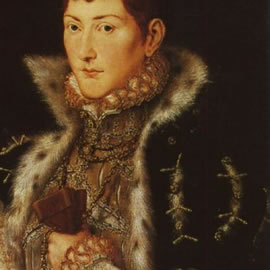
In the 16th and early 17th centuries you were what you wore - your status, your loyalties and even your loves were in full view for those who knew how to read the signs. Join Jacqui Ansell took us on a fascinating evening tour of the National Portrait Gallery.

My Wife Bibi in the Bathroom and other stories - how family snap-shots became grand narrative museum pictures.
Aliki Braine explored the wonders of narrative photography tracing the relationship between history painting and photography and looking at how ordinary personal images became works of art on museum walls. The work of photographers Julia Margaret Cameron, Jacque-Henri Lartigue, Jeff Wall, and Richard Billingham were discussed.
"The speaker had such enthusiasm - it was more like an amazing conversation rather than stuffy lecture."